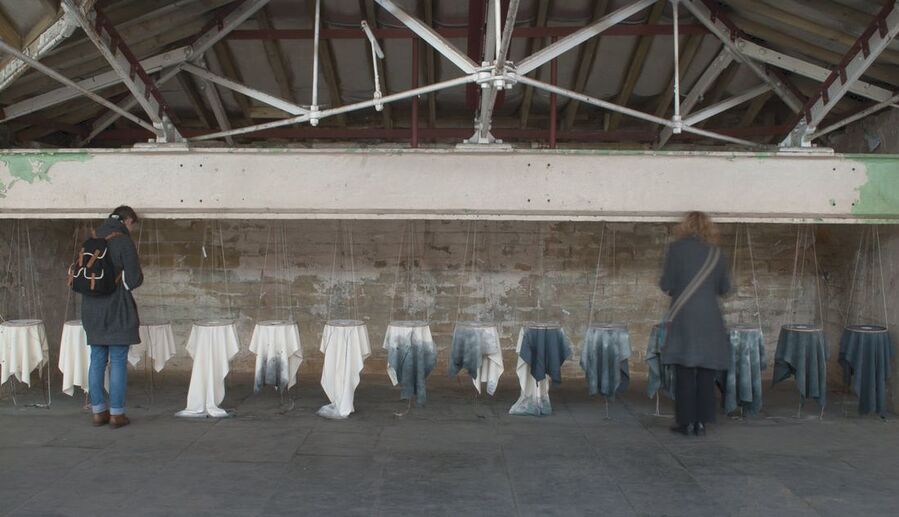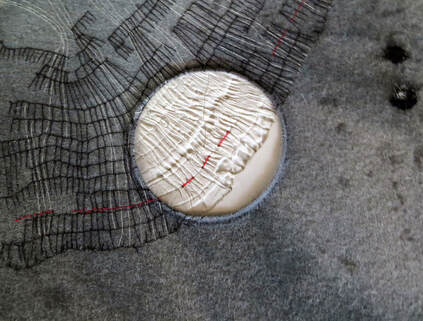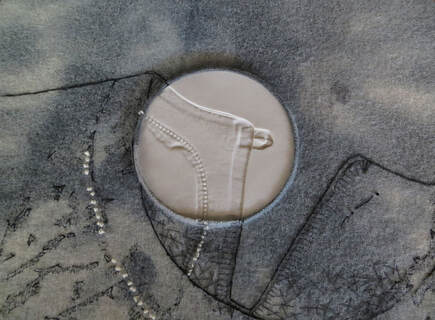Hand stitched wool, imprinted porcelain, wooden hoops, fabric oddments
750 x155 x 210 cms
750 x155 x 210 cms
|
The spinning hall at Salts Mill is now stilled from being a place of noise, activity and manufacture where lives were lived out in a day to day routine of repetitious activity amongst the clatter of machinery. The walls seem to seep cloth, leaking into it with the smells and oils of its production and residues cling to walls and beams. There is a sense of presence, and absence, of a bygone era of industrial manufacture when textile and ceramics industries were central to the economic life of Britain. Salts Mill is embedded in the community through architectural, cultural and social structures. Ideas of skin, bone, membrane came to mind together with ideas of networks of social, industrial, public and private relations, processes and materiality connecting the building itself with the idea of cloth as silent witness to the routines of daily lives. Framed by the immensity and silence of the architectural space, and in response to the site, Caroline wanted to make a work of quiet intensity which explores 'the texture of the intimate'...a space of close vision, the curl of a hair, the twist of a thread, the crease of a cloth. (1.)
1] P.Barnett. “Folds, Fragments, Surfaces; Towards a Poetics of Cloth” in Textures of Memory: The Poetics of Cloth [exhibition catalogue] (Nottingham: Angel Row Gallery) 1999 |
Porcelain discs imprinted with an impression taken from a piece of cloth or clothing (folded, crumpled) or clothing ( pinafore, apron, shawl) are inserted into the stretched wool and a stitched drawing expands out from this. A network of threads tie the work to the building each carrying labels naming mills, dyeworks, or weaving sheds in a geographical trajectory from Shipley to Bradford taking in Shipley (12), Bolton (3), Horton (45), Heaton (4), Manningham (18), and Bradford (56). Whilst some of these buildings have been demolished others are still active or like Salts Mill, have changed their use in a cycle of degeneration and regeneration.
The edges of the hoops carry the names of different wool cloth or wool mixes exhibited by some of these mills at the Great Exhibition in 1851. Some fabrics have disappeared from our vocabulary whilst others are still in production.
The edges of the hoops carry the names of different wool cloth or wool mixes exhibited by some of these mills at the Great Exhibition in 1851. Some fabrics have disappeared from our vocabulary whilst others are still in production.




